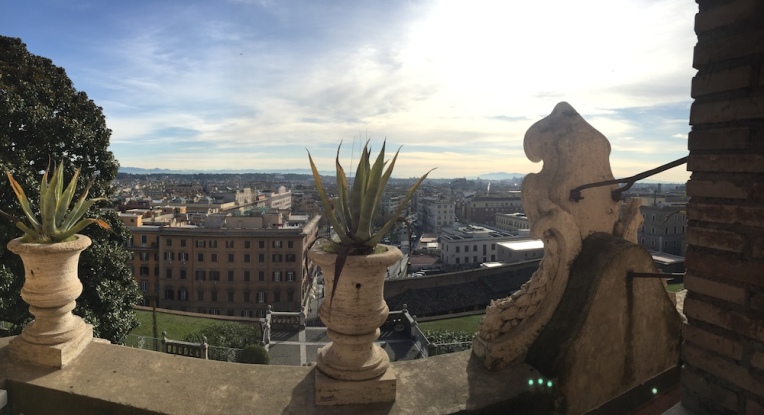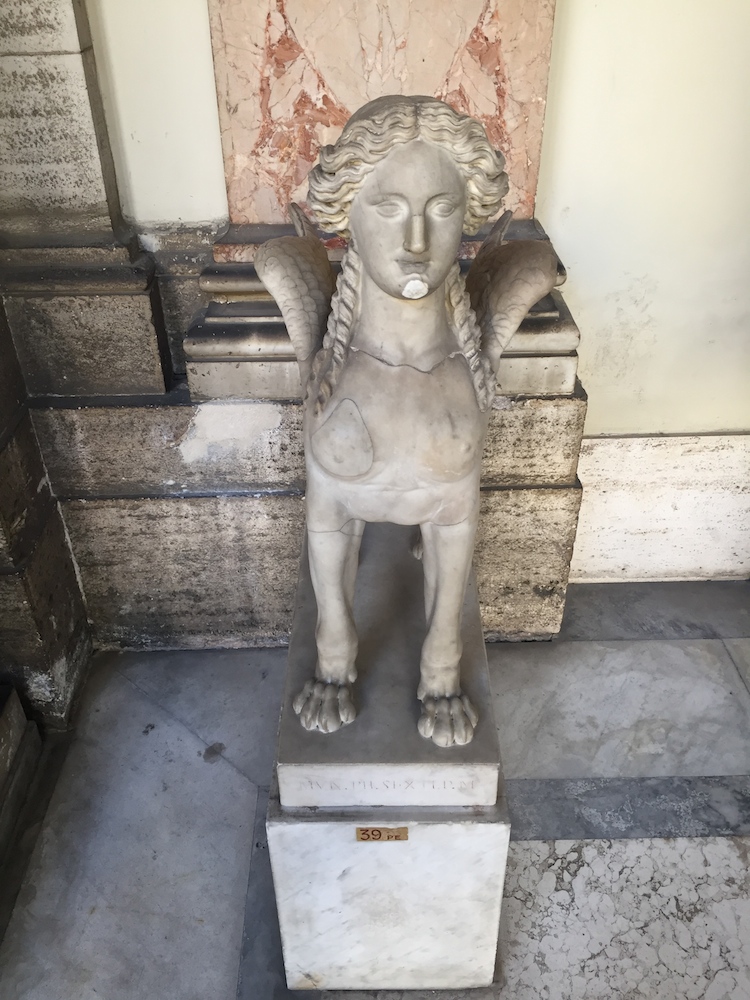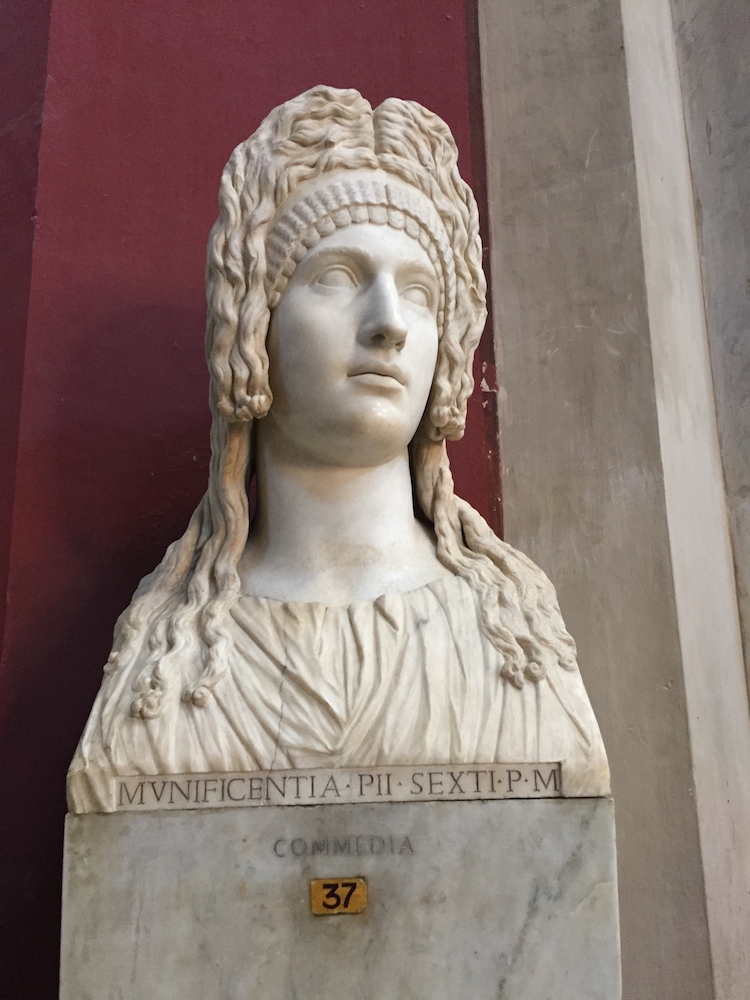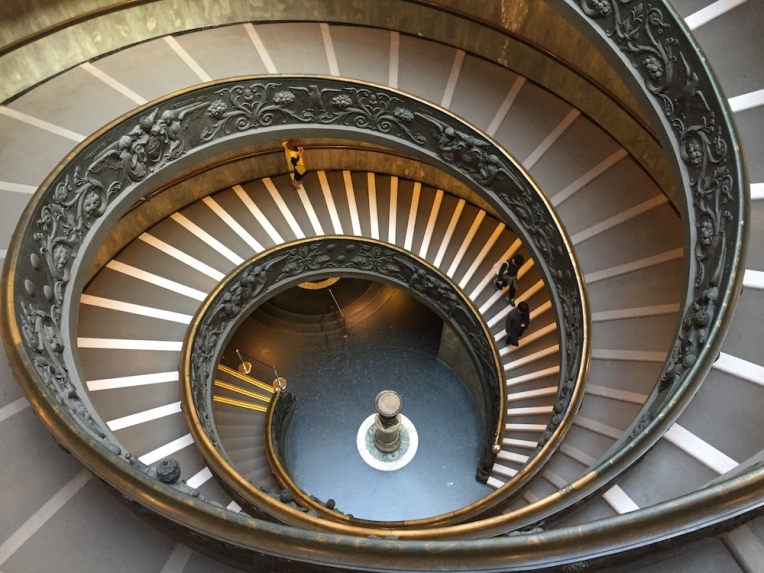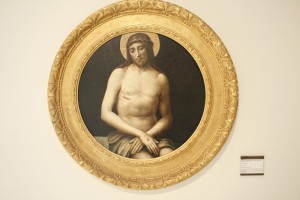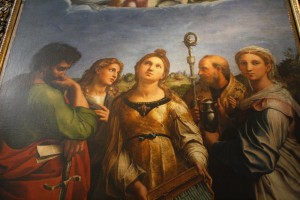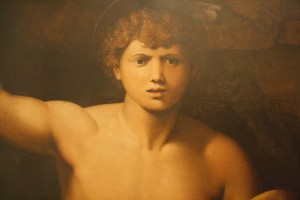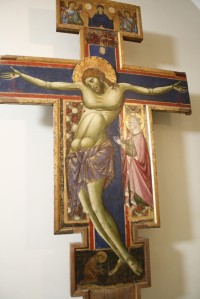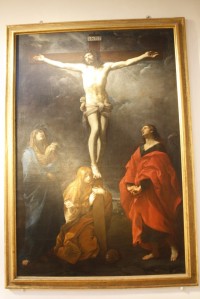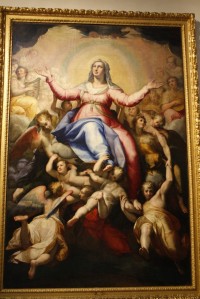There’s this whole story where I “lost” the camera that you can see here, but this post focuses on our actual journey through a very small piece of Rome…without any of those pointless and boring stories about how I sometimes screw things up.
So Brittany and I spent a few days in Rome, and I have to say that it wasn’t nearly enough. I still think my favorite Italian city (thus far) is Florence, but Rome is a really, really close second. What’s so great about it you ask? Everything…is my simple answer. Although, I suppose if you don’t like history, beautiful things, and excellent food then I guess the answer might change, but I like all three so this was a fantastic destination. I was a bit reluctant about going at first (it’s not really a cheap train ride from where we live). Sure I wanted to see the Colosseum, but other than that…I guess in my mind, Rome was a modern city with bustling traffic, skyscrapers, and a desire to feed on sightseers. Now don’t get me wrong, there was plenty of traffic and every shop / restaurant we passed had someone trying to herd us in, but if you can look past that (quite literally actually) you can see the heart of the city…and it’s beautiful.
Day 1:
Once we arrived and got our luggage up, we immediately headed to see the Colosseum…I mean you have to, right. Just like several other sights in Italy, the Colosseum can sneak up on you if you’re not paying attention. We were following our map app, winding down main roads, narrow streets, and alleys, but then…well we just kind of looked up at one point, and at the end of a very long, very narrow street…there it was.
Like good little tourists we used our selfie-stick to get a few photos. Seriously though, we both made fun of selfie-sticks, but Brittany bought one and it has been a great way to take pictures of us…I judged but I was wrong…
We had to…ummm…see a man about a camera…so we didn’t stay very long. What we did discover in a very short time though…you could spend several days not in Rome, but just in the area around the Colosseum and not see everything.
Arch of Constantine

According to Wikipedia, “The Arco di Costantino (Arch of Constantine) is a triumphal arch in Rome, situated between the Colosseum and the Palatine Hill. It was erected by the Roman Senate to commemorate Constantine I’s victory over Maxentius at the Battle of Milvian Bridge in 312. Dedicated in 315, it is the largest Roman triumphal arch. The arch spans the Via Triumphalis, the way taken by the emperors when they entered the city in triumph.”
Via di San Gregorio
The street leading to the arch and the Colosseum was also a pretty amazing site with umbrella pines lining each side. As mentioned before, this street was once called Via Triumphalis.
Day 2:
Day 2 in Rome led us to the Vatican City, the world’s smallest state and home of the Pope. The trek from our apartment to the Vatican was a long one, but like everything else in Italy, it was a beautiful one…
Vatican City
We actually had the opportunity to hear the Pope speak, but our ticket into the Vatican museum was for 8:30AM so we there instead.
My grandmother visited the Vatican and said they ate their picnic lunch under the pillars on the right side. I was hoping to get a photo of Brittany and I there, but the area under those pillars is now lined with security checkpoints much like an airport. You have to remove items and pass them through a scanner before entering…so much for the sweet, reminiscent picture. Brittany and I had no idea how to get to the museum, but we assumed we had to go through the security line with everyone else…not so. Security was to get into the main area to hear the Pope. To get to the museum, you basically have to walk around to the back of the Vatican…not too far, but far enough when you think you’re going to miss your entrance time. There was a fairly long line at the entrance, but because we had pre-purchased, we were led right in.
There were some absolutely beautiful sight inside the Vatican Museum…
And some gorgeous views…
And some awesome statues…
A little theatre for good measure…
But you weren’t allowed to take photos inside of the Sistine Chapel. I understand it’s a chapel and a “holy place,” but they’ve obviously had professional photographers there before so what really gives…I guess you have to pay a little bit more money for that privilege. Sorry, mom, couldn’t get a photo for you. I really wanted to be able to use the camera for another reason as well…it really hurts your neck to look up at the chapel after a while, I wanted to take a photo of some points of interest to study later. Also, I wanted to zoom in with the camera to see some of the finer details my eyes just couldn’t quite pick up on.
The gardens around the museum…
One of my favorite parts of the museum was the dual staircase leading to the exit…breathtaking, but difficult to photograph…
We left Vatican City in search of other wonders…(and lunch)…neither were very hard to find.
Fontana di Trevi
There is way more history to the Trevi Fountain than I can tell in this blog, but the fountain’s current look was completed in 1762. It is one of the most famous fountains in the world.
Legend says that to make a wish you are to throw a coin in the fountain using your right hand over your left shoulder, which of course we did. Wikipedia states that “An estimated 3,000 Euros are thrown into the fountain each day. The money has been used to subsidize a supermarket for Rome’s needy.” So all wishing aside…I was happy to donate.
We left the fountain and found gelato and Pinocchio!
We got a lot done in day two…as we often do, we wandered into our next spot. We had been able to see a set of statues from several places in the city, so we headed that way. Before we got there, however, we ran into…
Trajan’s Column
The column was “completed in AD 113…the freestanding column is most famous for its spiral base relief, which artistically describes the epic wars between the Romans and Dacians,” according to Wikipedia.
Altare della Patria
The “Altar of the Fatherland is a monument built in honor of Victor Emmanuel, the first king of a unified Italy, located in Rome, Italy. It was inaugurated in 1911 and completed in 1925. The monument holds the Tomb of the Unknown Soldier with an eternal flame, built under the statue of goddess Roma after World War I.” As usual…this information comes from Wikipedia.
The two statues of the goddess Victoria are the statues we were able to see from several points in the city.
I love my lion statues…
The eternal flame at the Tomb of the Unknown Soldier…
You can go inside of the Altar and it leads to the rooftop with an amazing view of Rome to the west…
And of Rome from the southeast…
It also provided a few different angles to some of the sites we had seen already…
We left the alter and headed back to the Colosseum. FYI, it was really cool in the shade and really hot in the sun, but that’s okay because it let me show off some Nashville Children’s Theatre love!
And, of course, we ended the day with a fantastic Italian meal from Pastamore…
If you’ve followed this blog for a while you may remember a little game between Brittany and I called WCBDOMC (Who Chooses the Better Dish Off the Menu Challenge). So you may be wondering who won this night…the answer is simple…the wine…the wine won, because only in Italy is the house wine actually made in house.
Day 3 (also known as the day we got the camera back):
This was our day to actually go inside of the Colosseum, Palatine Hill, and Roman Forum.
Il Colosseo
Point #1 – It was raining…and cold…

According to what we read inside, the building’s official name is the Flavian Amphitheatre, and as depicted in many movies, books, etc. was “used for gladiatorial contests and public spectacles such as mock sea battles, animal hunts, executions, re-enactments of famous battles, and dramas based on Classical mythology.” – Wikipedia. Some of the destruction of the building is due to time and Mother Nature, but much of the damage was caused when the building was used as a quarry.

There are a few placarded areas inside the Colosseum that act as a guide. One of these areas suggests that the following image was rather like a doodle made by a spectator of his / her favorite gladiator.

I really loved all of the different layers that were visible from the inside…

A view of the Arch of Constantine from within the Colosseum…


A view of some of the damage evident on the Northeastern face of the Colosseum…
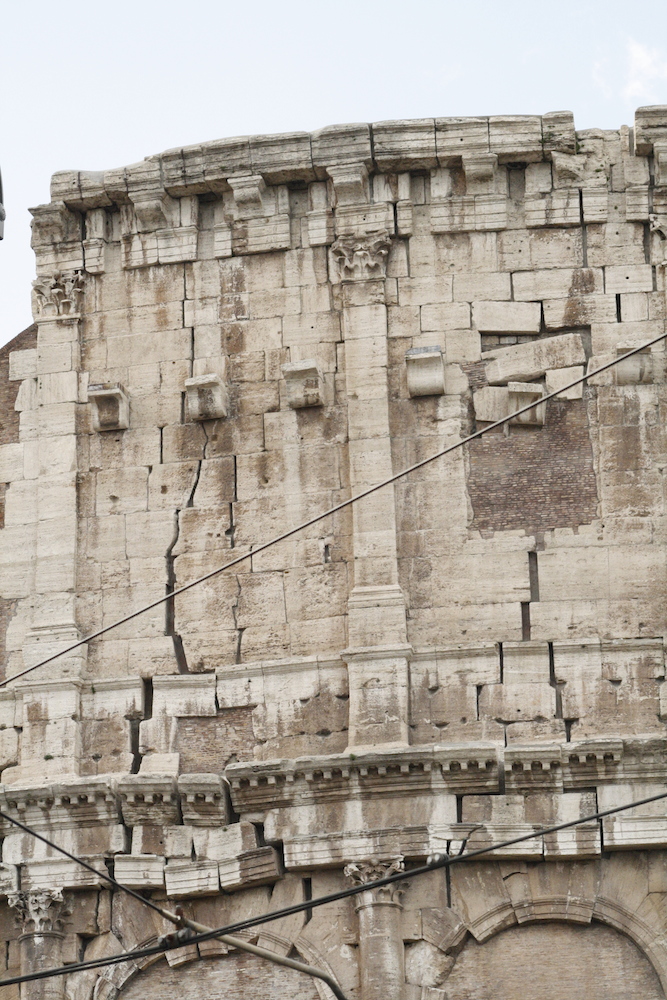
The sun finally came out as we were leaving…

A view of just how ginormous this thing was…

Palatino
Entrance to Palatine Hill and the Roman Forum were also included in our ticket to the Colosseum, and had the entrance to the Roman Forum been open we would have skipped Palatine Hill altogether. Afterwards, we were both glad the entrance was closed and we were forced to walk through Palatino.
Palatine Hill is full of beauty and mythology. It is said this is where Romulus and Remus where found. It is where Hercules defeated Cacus. It is where ancient beauty still stands.
The Palatine Stadium…
Crescent-shaped shield patterns still remain on the palace floors…
In the picture above, you can see a statue to the left of the entrance. Below is a close-up of that statue…
Foro Romano
I did “A Funny Thing Happened on the Way to the Forum” in college, so I knew there was this thing called a Forum that was in Rome somewhere, but I hadn’t ever put much actual thought into it. My mistake. Sure the Sistine Chapel is beautiful and the Colosseum is a wonder, but, for me, the Roman Forum is the thing you have to see. It is surreal to walk through the streets of an ancient civilization. To see where their breathtaking structures stood. To stand near where Julius Caesar was cremated. To feel history. I would have to write a book, a long…long book, to encompass everything we saw here…I won’t do that in this blog, but I can’t help putting as many of these images in as I can.
First up….the Arch of Titus, which was constructed in 82 AD to commemorate Titus’ victories. It is the first thing you see entering the forum from the south-east.
A panoramic view of the center section of the forum. The Arch of Titus and the Colosseum can be seen in the far right. The Basilica of Maxentius and Constantine is the large building in the center (it was actually the largest building in the forum and once housed the Colossus of Constantine).
Brittany and I in front of a grown-over fountain.
Another wide shot. On the far right is the Basilica of Maxentius and Constantine (as mentioned above). The circular building in the center was the Temple of Romulus, but was converted to a church, Santi Cosma e Damiano. Restorations in 1947 converted the circular portion back to its original form. On the left, the building fronted with pillars, is the Temple of Antoninus and Faustina.
The Temple of Vesta. The placard with this relic states: “Here the Vestal Virgins tended the sacred fire which was to burn perpetually as a symbol of the city’s life force.” It further states that “the current remains date to the period of Septimius Severus, who restored the building after the fire in AD 191.”
The Temple of Castor and Pollux, better known to us as Gemini (twins). Castor and Pollux were the twin sons of Zeus and Leda.
At the western end of the forum is the Temple of Saturn. Originally dedicated in 497 BC, fires have brought it to its current state.
A wide view including the Temple of Saturn on the right and the Temple of Vespasian and Titus is on the left. The center building was outside of the forum but I believe it is part of the Chiesa dei Santi Luca e Martina.
The single column is the Column of Phocas. It was the last addition made to the Roman Forum. Behind the column and to its right is the Arch of Septimius Severus, which was “dedicated in AD 203 to commemorate the Parthian victories of Emperor Septimius Severusand his two sons, Caracalla and Geta.” – Wikipedia On the far right is the Chiesa dei Santi Luca e Martina again.
The view of the Colosseum from the hill where the Temple of Venus and Roma once stood.
Teatro di Pompeo
After leaving the Roman Forum we decided to find some theatre relics (I mean come on…we had to). We discovered that we weren’t very far from the Theatre of Pompey, so we set out…and got lost. Our map to the theatre led us to a very small, dark alley, and we searched said alley thoroughly…to no avail. However, after wandering the general vicinity a bit, we realized we had already passed the site without realizing it (it’s really easy to do in an area where everything is ancient). The preserved site has very little of the actual theatre left. Much of what’s left is below buildings, in wine cellars, or building into the surrounding buildings. The area that remains contains mostly temples.
The area has also become a cat sanctuary…which made Brittany very happy.
One huge piece of history worth noting at this site…this is where Julius Caesar was murdered. And, according to the placard, that took place in the area pictured below. Interesting day…getting to see where Julius Caesar was murdered and cremated.
Pantheon
After ducking into a coffee shop to warm up and caffeine up, we headed back toward the apartment. Our path took us beside the Pantheon, so we stopped in on that site as well. This first photo was actually taken from our table at dinner.
The inside of the Pantheon was pretty dark, so it made taking photos difficult, but I did want to throw this one in…it Raphael’s tomb. I know it’s tough to read, but the inscription apparently reads “Here lies that famous Raphael by whom Nature feared to be conquered while he lived, and when he was dying, feared herself to die.”
Trevi Fountain at night
Our path home led us back to the Trevi Fountain so we stopped to see it at night…
I love this statue…I know he’s wresting with the horse’s bridle, but it really looks like he’s uppercutting the horse.
Well…that was Roma in a few days. Like I said, there is more than enough to keep someone busy for a lifetime here. I could have gladly spend the whole day with a book about the Roman Forum in one hand and a camera in the other…or to be able to look under the city at the ruins of the Theatre of Pompey…yeah, it’s amazing. Sorry the post was so long, but hopefully it gives you an idea of how much fun we had. Next up…Napoli!









